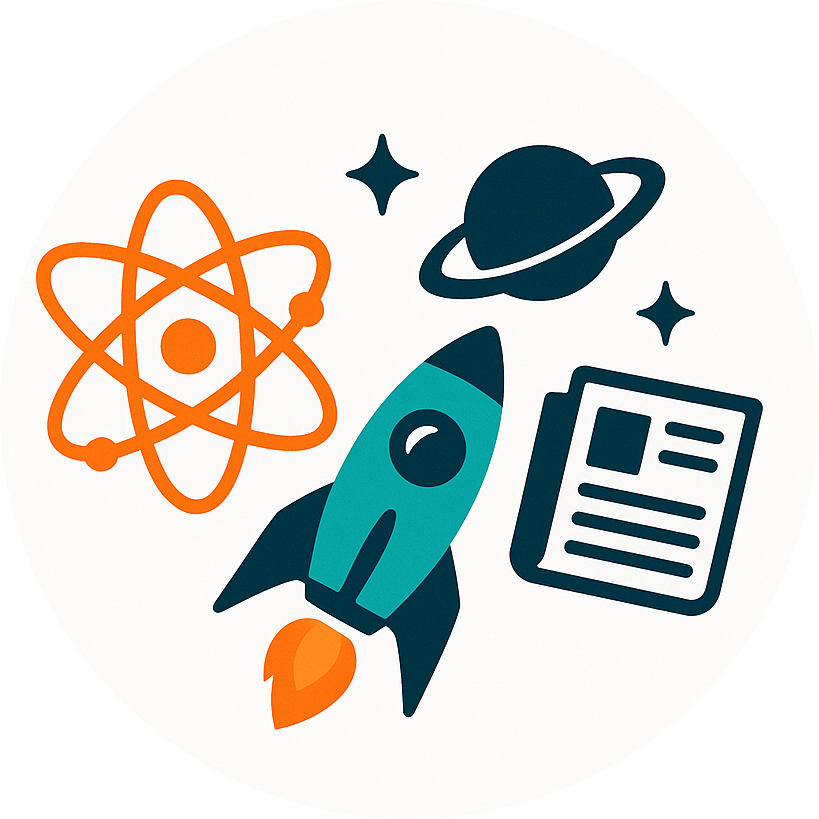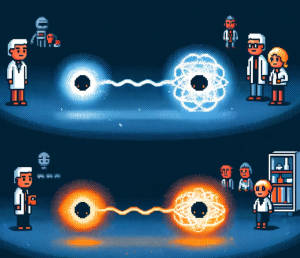
What Really Happens When Algorithms Go Quantum
Around the world, nearly three out of four deaths come from non-communicable diseases like diabetes, heart problems, and cancer. Diagnosing these conditions early could save millions of lives. But here’s the catch: modern medical data is messy, high-dimensional, and often overwhelming for doctors and computers alike. A new study has taken a surprising turn—using ideas from quantum physics and gravity to make artificial intelligence both faster and more accurate
Making It Relatable
Think of it this way: imagine trying to find your friend in a massive stadium. You could wander row by row (slow but thorough), or sprint in random directions (fast but chaotic). Optimization algorithms—computer methods for finding the “best” answer—face the same problem. Too much wandering, and they waste time. Too much sprinting, and they miss the goal. The challenge is balance: exploration versus exploitation.
Now imagine you had a magnet (gravity) pulling you closer to your friend, plus the ability to teleport (quantum tricks) to skip dead ends. That’s roughly what the new algorithm, Quantum-Inspired Gravitationally Guided Particle Swarm Optimization (QIGPSO), does.
The Research Story
Classic optimization algorithms—like genetic algorithms, particle swarm optimization (PSO), and gravitational search (GSA)—each have strengths but also well-known flaws. PSO, inspired by how birds flock, can get stuck in “local traps.” GSA, which treats solutions as masses tugging on each other with gravity, works well but slows down when fine-tuning.
The researchers combined the best of both worlds, adding a “quantum layer” inspired by principles like superposition (a particle existing in multiple states at once). This hybrid, QIGPSO, updates the movement of candidate solutions, utilizing Gaussian randomness to break free from traps and support vector machines (SVMs) to verify accuracy.
Here’s where it gets interesting: on medical datasets such as heart disease, breast cancer, and Parkinson’s disease, QIGPSO achieved accuracy rates of nearly 99%, often 7–8% higher than competing methods. Even more impressive, it cut computation times by up to 94% compared to older algorithms. That means doctors could one day get both faster and more accurate diagnoses from the same data.
Local Vignette: Why It Matters Globally
Picture a small hospital in rural Nigeria or India. Doctors there may not have the luxury of MRI machines or large teams of specialists. Instead, they rely on simple blood tests, X-rays, or patient histories—datasets that can be tricky to interpret. If QIGPSO can sift through those numbers and highlight the most important features quickly, it could guide treatment decisions on the spot.
Or think of a city clinic in Brazil, where hundreds of patients line up daily. A tool that flags high-risk cases with precision could mean earlier interventions and fewer lives lost.
Historical Context: From Atoms to Algorithms
Quantum mechanics once seemed like a purely theoretical field, puzzling scientists with talk of particles that were waves and cats that were both alive and dead. Now, its principles are reshaping computer science. Just as the laws of gravity helped us build bridges and airplanes, quantum ideas are helping us design smarter algorithms that don’t just guess—they adapt and learn in strange, powerful ways.
Unexpected Analogy
Optimization is like cooking rice. Leave it too long on the stove (exploit too much), and it burns. Keep lifting the lid to check (explore too much), and it never cooks. The right mix—steady heat, occasional checks—is what delivers perfect rice. QIGPSO essentially acts like an experienced cook, balancing the art of “looking around” with “sticking to what works.”
Results with Tension and Resolution
The problem: existing algorithms often fail in high-stakes, high-dimensional data like healthcare.
The twist: adding quantum-inspired randomness and gravitational balance prevents these failures.
The solution: QIGPSO outperformed its rivals across accuracy, speed, and stability, making it a powerful candidate for real-world adoption.
Impact Beyond Medicine
Although the study focused on medical datasets, the implications reach much further. From predicting crop yields in African villages, to optimizing traffic in crowded Asian megacities, to balancing renewable energy grids worldwide—anywhere data is complex and decisions are urgent, QIGPSO could help.
Keeping Curiosity Alive
But there’s a challenge. Quantum-inspired doesn’t mean quantum-powered. Today’s computers simulate these effects, which still takes resources. As actual quantum hardware improves, algorithms like QIGPSO might scale even more dramatically. Could this be the bridge between today’s AI and tomorrow’s quantum revolution?
Let’s Explore Together (Closing)
Science is moving fast, but its applications are only as powerful as the communities that adopt them. QIGPSO offers a glimpse of how merging physics and AI could change healthcare and beyond.
- Could this approach improve the way hospitals in your community diagnose diseases?
- If you were on the research team, what real-world dataset would you test next—climate data, crop yields, or social networks?
- What everyday problem in your life would you want an algorithm this smart to solve?
Because sometimes, the biggest leaps in science don’t come from building entirely new machines—but from rethinking how we use the principles of nature itself.



